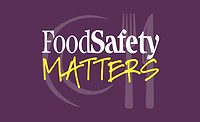The Food Safety Modernization Act (FSMA) directs the U.S. Food and Drug Administration (FDA) to designate as high-risk food products that are more likely to be a source of foodborne illness. FDA intends to publish a list of high-risk foods. Aside from any economic impact that might follow having a food product designated as high risk, a high-risk food product designation will have substantial ramifications for a food company, including:
• Adherence to enhanced recordkeeping requirements regarding each high-risk food product. Although FDA has yet to define those requirements, the goal is to facilitate effective and rapid tracking and tracing of a high-risk food product in the event that it is implicated in a foodborne illness outbreak or recall.
• Implementation of two different recordkeeping protocols where high-risk and nonhigh-risk foods are manufactured in the same facility and, alternatively, application of the enhanced recordkeeping policy to the entirety of the food manufacturing operation.
• Inspection by FDA with greater frequency of the facility in which the high-risk food product is manufactured.
• Review by FDA with greater frequency of records that pertain to any non-high-risk foods manufactured in the same facility as a high-risk food pursuant to FDA’s ability under FSMA to more easily obtain access to records of foods that may be affected in a similar manner.
• Adherence to mandated tracing procedures that FDA may issue.
On February 4, FDA took a substantial step toward fulfilling that mandate. It published for comment a risk-ranking model, titled “Draft Methodological Approach to Identifying High-Risk Foods under Section 204(d)(2) of the FSMA” (the “Draft Methodology”), by which it intends to assess which foods are high-risk. FSMA directs FDA to base its Draft Methodology with respect to a particular food product on the following factors:
1. Known safety risks the food product presents, taking into consideration the history, frequency and severity of foodborne illness and outbreaks attributed to the food product;
2. Potential that the food product has microbiological or chemical contamination or would support the growth of pathogenic microorganisms given the nature of the food or the manner in which the food is produced;
3. Point in the manufacturing process where contamination of the food is most likely to occur;
4. Likelihood of contamination and the steps taken during the manufacturing process to reduce the possibility of contamination;
5. Likelihood that a person or animal consuming the particular food will suffer foodborne illness resulting from contamination of the food; and
6. Likely or known acuteness, including health and economic impacts, of foodborne illness attributed to the food product.
FDA believes that a risk-ranking model that incorporates those factors is most appropriate for determining high-risk foods because it requires a data-driven, comprehensive assessment tied to public health risk that is sufficiently flexible to cover various types of foods that may be deemed high-risk.
In addition to the assessment methodology, the Draft Methodology proposes to categorize high-risk food using the 28 commodity categories found in the Reportable Food Registry. Study of and comment on the high-risk food categories that FDA proposes is of equal importance to study and comment on the assessment criteria. Limiting the panoply of food products to 28 broad food categories might result in FDA lumping food products that have negligible foodborne illness outbreak risk with foods appropriately deemed high-risk.
Proper assessment and categorization of the risk a food product presents practically may become even more important in light of the limited funds available to FDA to implement FSMA. Recently, in testimony before the U.S. House of Representatives Subcommittee on Health, Committee on Energy and Commerce, Michael Taylor, FDA Deputy Commissioner for Foods and Veterinary Medicine, informed the Subcommittee that FDA has sufficient resources to issue FSMA-related regulations but not to fully implement and enforce FSMA. Should those funding issues continue, FDA may use assessments such as that for determining high-risk foods to further determine how best to spend its limited resources.
To the extent that a food company manufacturers a food product that may be deemed high risk, or uses in its product an ingredient deemed high risk, the company should closely review and comment on FDA’s Draft Methodology. FDA specifically invites comments on this important analysis, including scientific data and information on identifying high-risk foods, alternative identification approaches, whether the criteria used to evaluate a food product should be weighed equally, the system by which the criteria are scored, and the categorization of high-risk foods. But time in which to do so grows short; the comment period on the Draft Methodology remains open until April 7, 2014. The Draft Methodology is on FDA’s website, and a food company may submit comments electronically to FDA at www.regulations.gov. By availing itself of this important comment opportunity, a food company may be able to help shape the rules by which it will have to operate.
John T. Shapiro is partner and member of the Food Industry Team at Freeborn & Peters LLP (Chicago).
>




